Template:Individual-TLP-paragraph-en-6.1203
6.1203 In order to recognize a tautology as such, we can, in cases in which no sign of generality occurs in the tautology, make use of the following intuitive method: I write instead of “p”, “q”, “r”, etc., “T p F”, “T q F”, “T r F”, etc. The truth-combinations I express by brackets, e.g.:
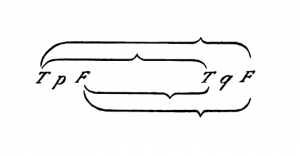
and the co-ordination of the truth or falsity of the whole proposition with the truth-combinations of the truth-arguments by lines in the following way:
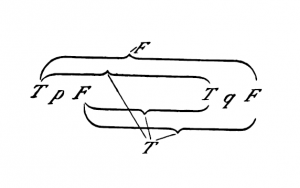
This sign, for example, would therefore present the proposition “p ⊃ q”. Now I will proceed to inquire whether such a proposition as ~(p . ~p) (The Law of Contradiction) is a tautology. The form “~ ξ” is written in our notation
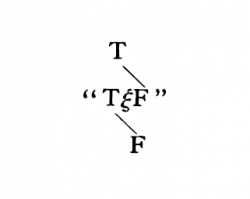
the form “ξ . η” thus:—
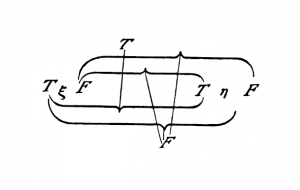
Hence the proposition ~(p . ~q) runs thus:—
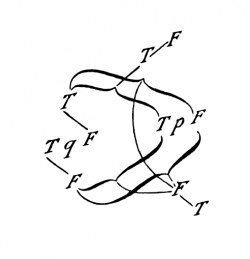
If here we put “p” instead of “q” and examine the combination of the outermost T and F with the innermost, it is seen that the truth of the whole proposition is co-ordinated with all the truth-combinations of its argument, its falsity with none of the truth-combinations.